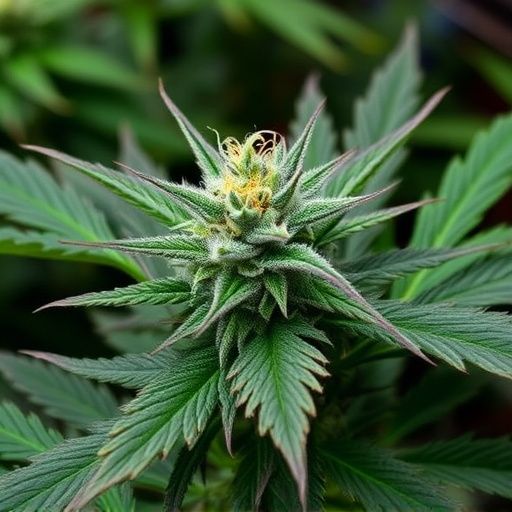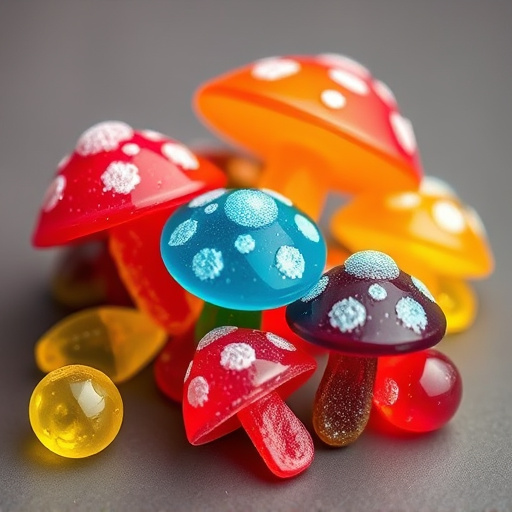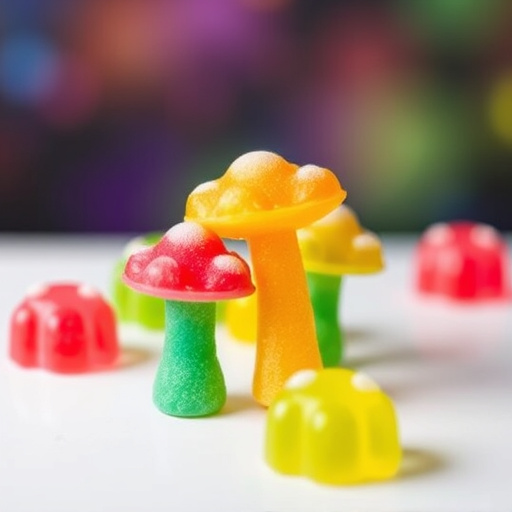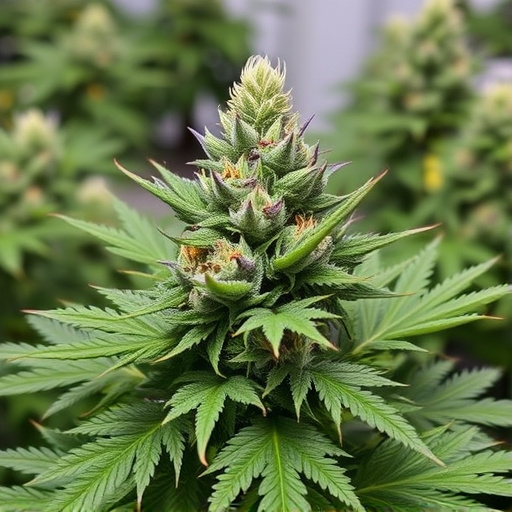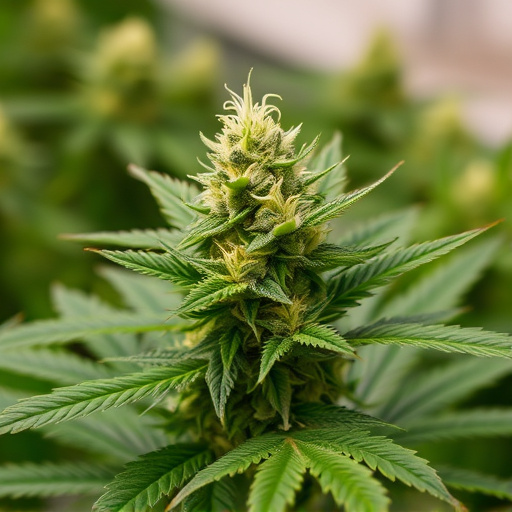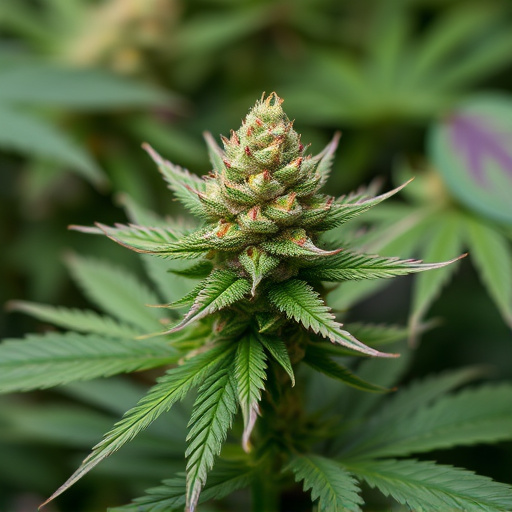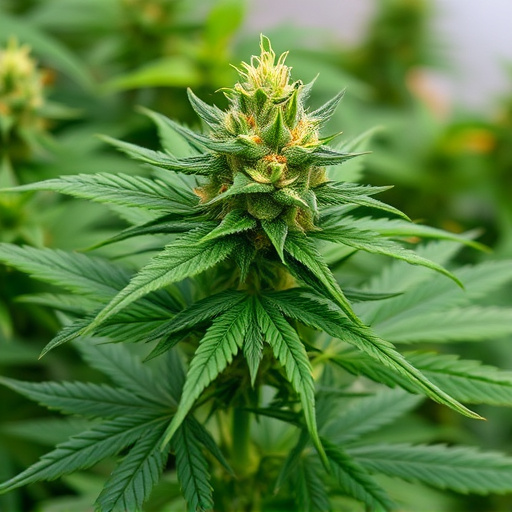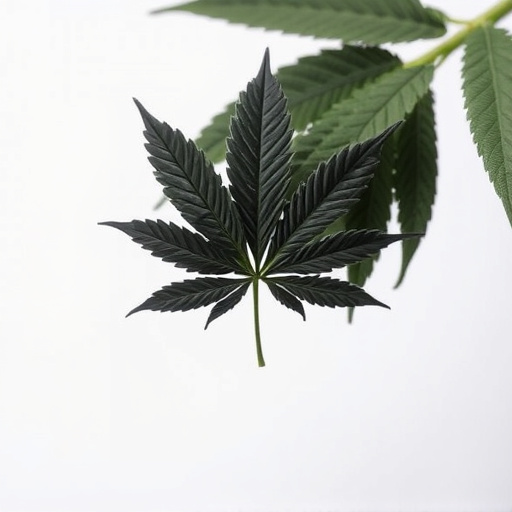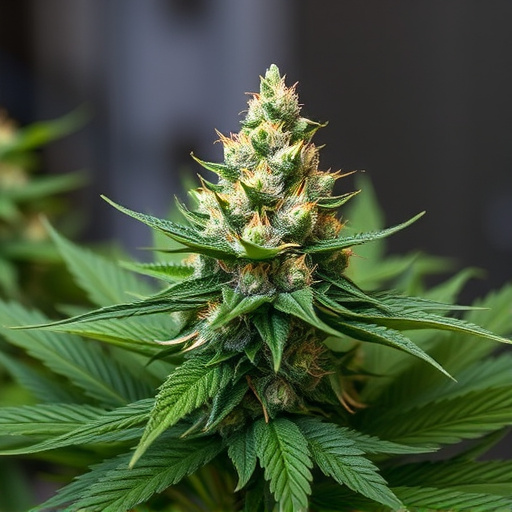Temperature plays a pivotal role in the absorption of cannabinoids like THC and CBD from cannabis strains used to treat PTSD, affecting their efficacy and dosing. Optimal temperature ranges ensure maximum bioavailability and potency, crucial for managing PTSD symptoms through these compounds. Specific consumption methods, including vaping, smoking, and edibles, vary in delivery speed and effects, with edibles offering precise dosing. Cannabis strains tailored for PTSD can significantly enhance treatment outcomes.
Temperature plays a surprising role in how our bodies absorb key compounds in cannabis, particularly THC (tetrahydrocannabinol) and CBD (cannabidiol), which have garnered attention for their potential PTSD treatments. This article delves into the science behind temperature’s effect on cannabinoid absorption. We explore how different temperatures impact the efficacy of cannabis strains designed for PTSD relief, and offer practical tips on optimizing consumption methods to ensure maximum benefits for those seeking alternative therapies.
- Understanding the Impact of Temperature on Cannabinoid Absorption
- The Role of THC and CBD in Cannabis Strains for PTSD Treatment
- Optimizing Consumption Methods for Efficient Cannabinoid Absorption
Understanding the Impact of Temperature on Cannabinoid Absorption
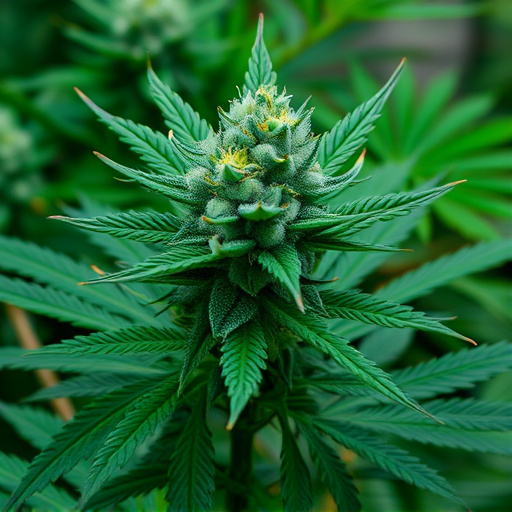
Understanding the Impact of Temperature on Cannabinoid Absorption
Temperature plays a significant role in how our bodies absorb cannabinoids, such as THC and CBD, from cannabis strains for PTSD or other conditions. The absorption process is influenced by the physical state of these compounds at different temperatures. For instance, when consumed orally, cannabinoids are typically in an oil or extract form, which has different properties than the same compound in a vaporized state. Research suggests that optimal absorption occurs within specific temperature ranges.
For cannabis strains for PTSD, understanding this dynamic is crucial as it can affect the overall efficacy and dosing of treatments. Temperatures that are too low may prevent cannabinoids from fully releasing from the carrier or extract, leading to reduced bioavailability. Conversely, high temperatures can degrade these compounds over time, reducing their potency. Therefore, maintaining a consistent and optimal temperature during preparation and consumption is essential for maximizing the benefits of cannabinoids in managing PTSD symptoms.
The Role of THC and CBD in Cannabis Strains for PTSD Treatment
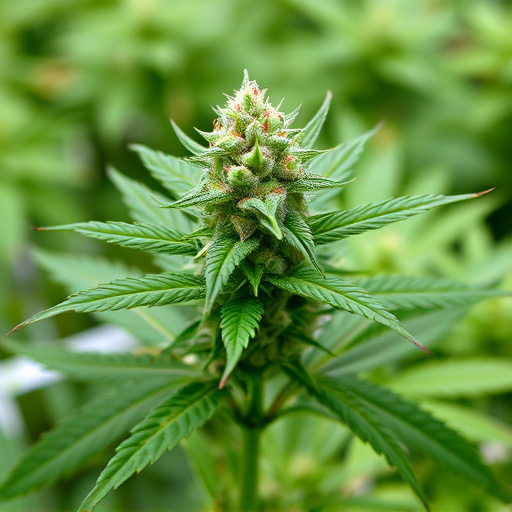
THC (Tetrahydrocannabinol) and CBD (Cannabidiol) play pivotal roles in cannabis strains used for Post-Traumatic Stress Disorder (PTSD) treatment. THC, known for its psychoactive effects, has shown promise in reducing anxiety and triggering sleep, which are common symptoms of PTSD. It interacts with the body’s endocannabinoid system to modulate mood, appetite, and memory—areas frequently affected by traumatic experiences.
Cannabidiol, on the other hand, is non-psychoactive but possesses anti-anxiety and anti-inflammatory properties. Studies have indicated that CBD can help in managing fear and flashbacks, two significant aspects of PTSD. The synergy between THC and CBD in specific cannabis strains offers a holistic approach to treating PTSD symptoms, making these compounds valuable assets in the search for effective therapeutic interventions.
Optimizing Consumption Methods for Efficient Cannabinoid Absorption
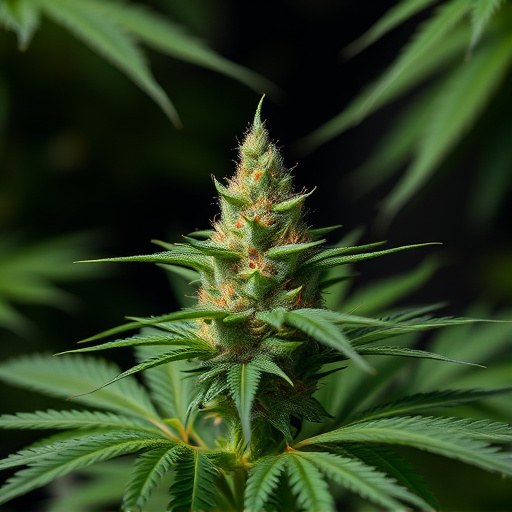
Optimizing consumption methods is key to enhancing the absorption of cannabinoids, such as THC and CBD, particularly for conditions like PTSD where their therapeutic effects are sought. Different cannabis strains offer varying ratios of THC to CBD, each with unique impacts on the body and mind. For efficient absorption, understanding these strains and their specific benefits can guide individuals in choosing the right consumption method.
Inhalation through vaping or smoking is a popular choice for rapid and effective delivery of cannabinoids into the bloodstream. However, controlled studies are essential to determine optimal temperatures for maximizing THC and CBD absorption without unwanted side effects. Edibles, another common method, offer slower but longer-lasting effects, allowing for precise dosing. For PTSD patients, this can be advantageous as it enables them to manage their symptoms effectively throughout the day.
In conclusion, understanding how temperature influences THC and CBD absorption is key to optimizing the efficacy of cannabis strains for PTSD treatment. The right consumption methods, combined with knowledge of cannabinoid behavior at different temperatures, can enhance therapeutic outcomes. By considering these factors, individuals seeking relief from PTSD can make informed decisions regarding their cannabis use, ensuring maximum benefits from this natural remedy.
